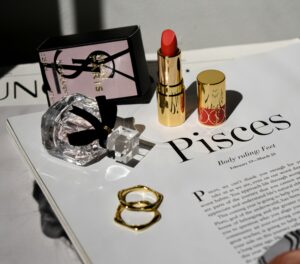Update: New ingredients banned for cosmetic use by the EU

Product category
Author
In recent years, the European Commission has intensified its efforts to regulate cosmetic ingredients more strictly in the European Union. Starting with a major regulatory update in June 2023, the Commission notified the World Trade Organisation (WTO) of its plan to impose new restrictions and bans on cosmetic substances linked to health risks like endocrine disruption and overexposure. This marked a significant change under the EU Cosmetics Regulation (Regulation (EC) No 1223/2009).
Now, in May 2025, the European Commission has introduced a second wave of restrictions through the Omnibus Act 2, again notifying the WTO. These updates continue the trend of tightening controls on cosmetic ingredients, with fresh bans, stricter concentration limits, and newly defined conditions for the use of certain substances in personal care products.
This evolving regulatory landscape means cosmetic brands must stay alert to both 2023 and 2025 ingredient changes to ensure ongoing compliance and consumer safety.
2023: The Last Major Round (June 8, 2023)
1. Complete Ban of 4-Methylbenzylidene Camphor (4-MBC)
What is it? 4-MBC is a chemical UV filter previously used in sunscreens and other cosmetic products to protect against UV radiation.
What’s new? The EU will completely ban 4-MBC. Its entry in the regulation (Annex VI) will be removed, meaning it can no longer be used in any cosmetic product within the EU.
2. New Restrictions on Common Skin Care Ingredients
Several popular skincare ingredients will now face strict concentration limits, including:
- Genistein and Daidzein (plant-based compounds)
- Kojic Acid (used for skin brightening)
- Alpha-Arbutin and Arbutin (commonly found in whitening products)
- Vitamin A and its forms (Retinol, Retinyl Acetate, Retinyl Palmitate)
Why the Restrictions?
The European Food Safety Authority (EFSA) has raised concerns that total exposure to Vitamin A from food, supplements, and cosmetics could exceed safe levels. Similarly, some of these ingredients are being monitored for potential endocrine-disrupting properties, meaning they could affect hormones and overall health.
New Limits on Vitamin A:
- 0.05% Retinol Equivalent (RE) in body lotions
- 0.3% Retinol Equivalent (RE) in other cosmetic products
Label Warning Required: Products must clearly state: “Contains Vitamin A-related compounds, which contribute to your daily intake of Vitamin A.”
3. Stricter Controls on Preservatives: Triclocarban and Triclosan
- Triclocarban: Allowed in most products at a maximum of 0.2%, but banned in mouthwash.
- Triclosan: Banned in mouthwash, and toothpaste with Triclosan must carry a warning not to use it for children under 6 years old.
These preservatives have been limited due to concerns about antibiotic resistance and hormone disruption.

Luke Williams
Managing Director
We wanted to be able to provide more accurate information to our consumers, allowing them to make more considered purchases when shopping for their beauty essentials on our website.

2025: Omnibus Act 2 (Notified to WTO on May 16, 2025)
The European Commission’s Omnibus Act 2 introduces several new restrictions based on SCCS safety assessments Cosmetics Europe -+11COSlaw+11COSlaw+11:
- Silver Zinc Zeolite: Reintroduced as a preservative in spray deodorants and powder foundations (max 1%, silver content ≤ 2.5%), banned in other cosmetics.
- Triphenyl Phosphate: Fully banned due to potential genotoxicity.
- Zinc Salts: New restrictions on zinc acetate, chloride, gluconate, and glutamate depending on product type.
- Fragrance Allergens: Citral, geranial, neral, and benzyl salicylate are restricted due to allergenic concerns.
- Aluminium Compounds: Added to Annex II and III with bans or strict limits, except for a few permitted cases.
- Additional Ingredient Bans:
- Vetiveria zizanioides (root extract/oil), HC Blue No. 18, HC Yellow No. 16, HC Red No. 18 banned.
- Hydroxypropyl-p-phenylenediamine (and its HCl salt) is restricted.
- Vetiveria zizanioides (root extract/oil), HC Blue No. 18, HC Yellow No. 16, HC Red No. 18 banned.
- DHHB (UV Filter): Still allowed but must limit di-n-hexyl phthalate (DnHexP) impurity to 10 ppm.
These updates require product reformulation and compliance by 2025–2028 deadlines.
🔜 Compliance Deadlines
- From July 1, 2025: Products with restricted substances (excluding geranial/neral) cannot be placed on the EU market.
- From January 1, 2027: Full enforcement—all regulated substances must fully comply or be removed.
- From August 1, 2028: Products containing geranial and neral cannot be made available at all.
Why This Update Matters
- The last major update in 2022 resulted in 23 ingredients being banned from cosmetics. This trend continues as authorities prioritize consumer safety and environmental responsibility.
- The Scientific Committee on Consumer Safety (SCCS) played a key role by reviewing the latest scientific data, especially concerning Vitamin A and endocrine-disrupting chemicals.
Did you know:
The Inference Beauty ingredient database holds the largest amount of ingredients in the world. Find out more about the Inference Beauty INCI explainer.
What Should Cosmetic Brands Do?
If you are a beauty brand or cosmetic manufacturer:
- Review your product formulations immediately.
- Check ingredient lists for any of the newly restricted or banned substances.
- Adjust your formulations before the regulation comes into force to avoid penalties or product recalls.
- Update product labels where required, especially for products containing Vitamin A derivatives.
Regulations in the cosmetic industry are constantly evolving. Staying updated and compliant is not just about legal requirements but also about protecting your customers and enhancing brand trust.
References:
- European Commission. (2023). Commission Regulation (EU) …/… of XXX amending Regulation (EC) No 1223/2009 of the European Parliament and of the Council as regards the use of Vitamin A, Alpha-Arbutin and Arbutin and certain substances with potential endocrine disrupting properties in cosmetic products. Retrieved on 19/06/2023
- European Commission. (2023). Annex to the Commission Regulation …/… Retrieved on 19/06/2023
- WTO. (2023). Notification G/TBT/N/EU986. Retrieved on 19/06/2023
- SCCS. (2022). Revision of the scientific opinion (SCCS/1576/16) on vitamin A (Retinol, Retinyl Acetate, Retinyl Palmitate). Retrieved on 19/06/2023



